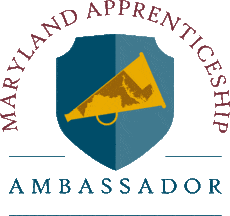Where IS the American culture on the subject of apprenticeship? We hear a lot of rhetoric, we’ve seen a few national changes, but not nearly enough.
In our country, we don’t offer apprenticeships early enough. We aren’t capturing our sixteen- year old’s in their high school path. By example, a high school student in Europe can choose a skilled trade path with Rolex; training, completing school and earning, that student can realize full employment and sustainability by age 20.
“ Growing up” inside the company you are working for, allows companies to foster loyalty and retention. The model of “production at any cost, including losing employees” went out of style in the early 1900’s. Where the Europeans decided to keep many of the apprentice models, and include skilled trade high school paths, Americans decided it was better to let an employee go ahead and leave, train up the next one quickly, and keep production high. Volume.
We did, for a number of decades, out produce other countries in goods. But as we pushed out volume, they continued to train and educate their work force.
Many successful programs do not start at the end of high school. They don’t wait for the student to be “finished” with a core curriculum that may, or may not, have served them well to gain employment.
There are growing success stories of businesses partnering with state education systems- notably the JP Morgan partnership with Delaware, and the success of the Kentucky school systems working with high school “pathways” to career training and certifications. These programs make clear that they want to start the student during the high school years, completing both the academic and certification requirements, and graduate a working, sustainable young adult.
The “pathways” model openly acknowledges that schools need to interact with the business community in order to know what skills are/will be needed in the American workplace, helping position both schools and students to meet real world needs. This river must flow both ways- with businesses recognizing they need to run programs like these in our schools.
Apprenticeship and pre-apprenticeship aim to do this too. There are not enough high schools and community colleges embracing the skilled trades the way they might for vet techs or EMS personnel or electronics technicians.
Everyone is not going to college. Everyone doesn’t even want to go- but the worst lie we tell as a nation is the one we tell our students when we tell them we are preparing them all for college. College where? Studying what? And who is paying for it?
We put teachers and counselors under tremendous pressure to produce test score results that are geared toward a higher education path many students are not built for and /or have no way of attaining. The support system is simply not there for everyone. Not every family is built to provide a college option and we know this is the truth.
Does this make the students who are unable to attain a college education stupid or less worthy? It certainly does not. What about the student who enjoys practical applications of their math and problem- solving skills?
Apprenticeships are not for students with poor academic skills (it’s not a dumping ground) and it’s not impossible to set up: from “How to Set Up a U.S. Apprenticeship Program”/2013 article
“Establishing an apprenticeship program is not difficult,” says Bob Baird, vice president of industry and regulatory affairs at the trade association Independent Electrical Contractors.
A registered apprenticeship is a course of study laid out by a sponsoring company, labor union or community organization. Local community or technical colleges may be partners in the program. U.S. apprenticeship programs need to be registered with and approved by the Department of Labor’s Employment and Training Administration—and sometimes by state governments. Apprenticeships are regulated at the federal level under the National Apprenticeship Act.
“Some people don’t want to deal with government regulations,” Baird says. “But if you look at it, these are things you ought to be doing anyway—tracking employee progress, noting educational achievement, rewarding them for advancement. … If you’re willing to take a little time to think about your policies, put them down on paper and enforce them consistently, it isn’t that tough.”
Apprenticeships differ in some ways from traditional employee training. “Apprenticeships are a more structured and comprehensive approach to training,” explains Bernadette Oliveira-Rivera, administrator of the Laborers’ International Union of North America training and education fund. “You may get the individual up-to-speed with training, but the individual has nothing meaningful to show for it.” She says a journey worker certificate awarded after an individual completes an apprenticeship program is a transportable credential analogous to a college degree.
U.S. apprenticeships have two components: applied learning (hands-on work) and theoretical learning (often accomplished through classroom instruction). There is usually a minimum of 144 hours per year of classroom instruction but no minimum time for the on-the-job component. Typically, apprenticeships last from two to six years, with four years being the most common.
Upon graduation from the apprenticeship program, apprentices receive certificates from the U.S. Department of Labor. In some cases, they may take an exam and receive credentials from an industry association, such as the National Institute for Metalworking Skills.” HR Magazine/2013 Katherine Tyler
In an article last year from the Washington Post:
“Last year (2016), about 500,000 apprentices were listed with 21,000 programs on the Department of Labor’s registry. While that’s up from fewer than 400,000 just four years ago, it’s still far short of demand and pales in comparison to the 2 million new students who enroll in community colleges every year.
Apprenticeships are receiving renewed attention partly because the primary pathway into the job market — the college degree — has led some graduates to struggle in finding work and facing large amounts of student-loan debt. Some 91 percent of apprentices find employment after completing their programs, with a starting pay of more than $51,000 annually. What’s more, most of them leave their programs without any debt, compared to the average college graduate last year who borrowed to finance their education and left campus $37,000 in the hole.” 2017 article: https://www.washingtonpost.com/news/grade-point/wp/2017/12/22/why-are-apprenticeships-a-good-idea-that-have-never-really-taken-off-in-the-u-s/?
See the IEC Chesapeake comparison on our site: https://www.iecchesapeake.com/electrical-apprenticeship-training-program
“Let’s Compare 4-Year Programs
Are you aware that it takes an electrician 4 years, the same as a traditional degree, to complete their program? A Master Electrician trains as long as doctor studies, having at least 8 years on the job and the 4 years of classroom study. As with many professions, an electrician must also be licensed. So let’s compare your two options, using University of Maryland (2014) stats:
COST CATEGORIES
TRADITIONAL UNIVERSITY
Annual Tuition & Mandatory Fees*
$9,427-$29,720 (resident vs. non-resident)
IECC $2,365
On Campus Resident Hall Room, Cable & Phone
$6,424
IECC N/A
Meal Plan (Average)
$4,209
IECC N/A
Books & Supplies**
$1,130
IECC $1,100
Local Transportation & Incidental Costs**
$3,162
IECC N/A
TOTAL yearly
University $24,352-$44,645 (resident vs. non-resident) yearly
IECC $3,465 yearly
That’s Only $12,400 For All Four Years of an Electrical Journeyman Apprenticeship; graduating employed and earning. The University is ending up at $100,000.00 plus for all four years- and no guaranteed employment upon graduation.
As compared to traditional university, four years of study (undergraduate program) will cost a resident of Maryland $97,408 for all 4 years (assuming fixed cost). He or she may or may not have a job during this time, and is not likely working in the field of study while in school. At graduation, he or she may or may not have a job; may take up to a year to find work within his/her field of study, and the graduate may have a school loan debt ranging from $15,000 to $100,000.”
We’re a lot like the U.S. Marines; we’re looking for a few good people. Not just anyone.
I can tell you the skilled trades are more than happy to have today’s students. If you can pass our math tests and basic English skills test, we are happy to have you as a candidate for Apprentice Journeyman. You are welcome to join us at a bricka nd mortar location, or through our fully accredited online Electrical Apprenticeship Program.
Millennials get it. They will choose a corporate or company culture over paycheck. They KNOW they will be more productive and earn better in the long run if they are in a place that values and recognizes them from the jump.
Help young people achieve success and sustainability for a lifetime; give them ALL the options.
Grant Shmelzer
Executive Director, IEC Chesapeake (IECC)













